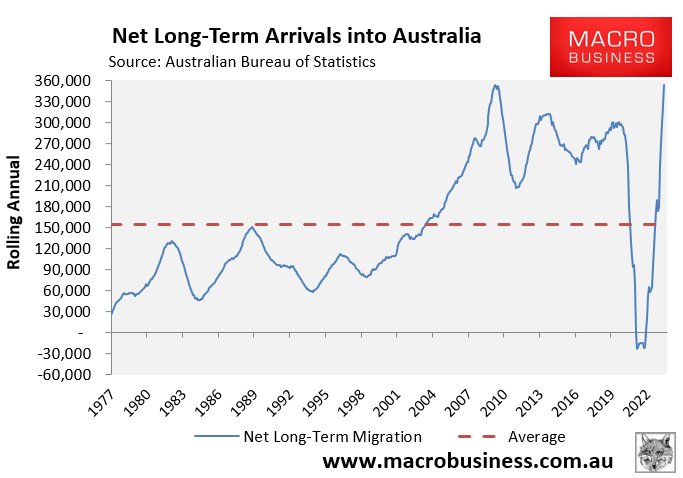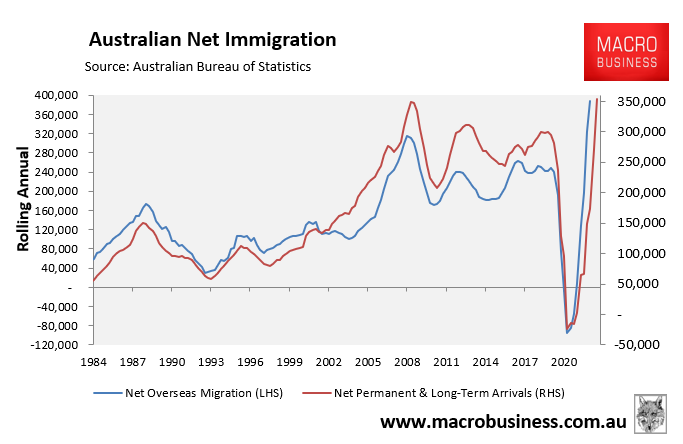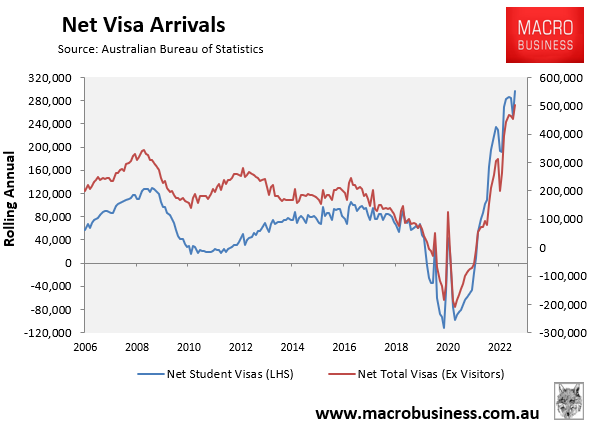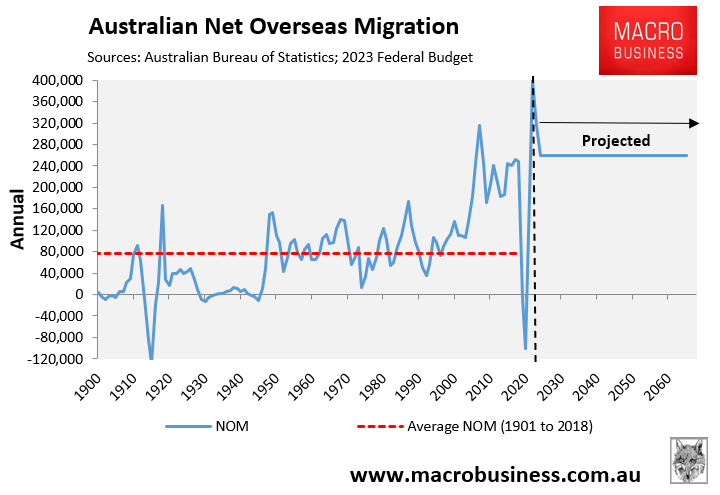The Australian Bureau of Statistics (ABS) on Thursday released data on permanent and long-term movements into and out of Australia.
Over the 2022-23 financial year, there were a record 353,700 net permanent and long-term arrivals in Australia:

Australia posted a record rise in net overseas migration (NOM) of 387.000 in the 2022 calendar year, and the May federal budget forecast NOM of 400,000 over the 2022-23 financial year.
The ABS’ monthly arrivals data correlates strongly with the ABS’ quarterly NOM data, and suggests that NOM will have edged higher over the March and June quarters close to the federal budget’s forecast:

The ABS also provided provisional visa data to July 2023.
This shows that there was a record 300,000 net student visa arrivals in the year to July:

This unprecedented surge in student visas drove total net visa arrivals (excluding holiday makers) to an all-time high 502,000 in the year to July:

The Institute of Public Affairs (IPA) last month released research showing that International students were taking all new housing supply across some capital city markets.
Clearly, the federal government has engineered Australia’s housing shortage with its unprecedented immigration program.
The former Morrison Government uncapped international student working hours, resulting in an increase in the number of migrants attempting to utilise the student visa system as a backdoor work visa.
Following that, the Albanese Government extended post-study work rights, thereby transforming a graduate visa into a long-term resident and work visa.
The Albanese Government has also established new immigration pathways, especially for Indian students.

The solution to Australia’s housing shortage is simply to lower NOM to the long-term historical average of around 100,000 per year.
This level of immigration has worked well for Australia in the past and would enable the supply of housing and infrastructure to keep pace with demand.

